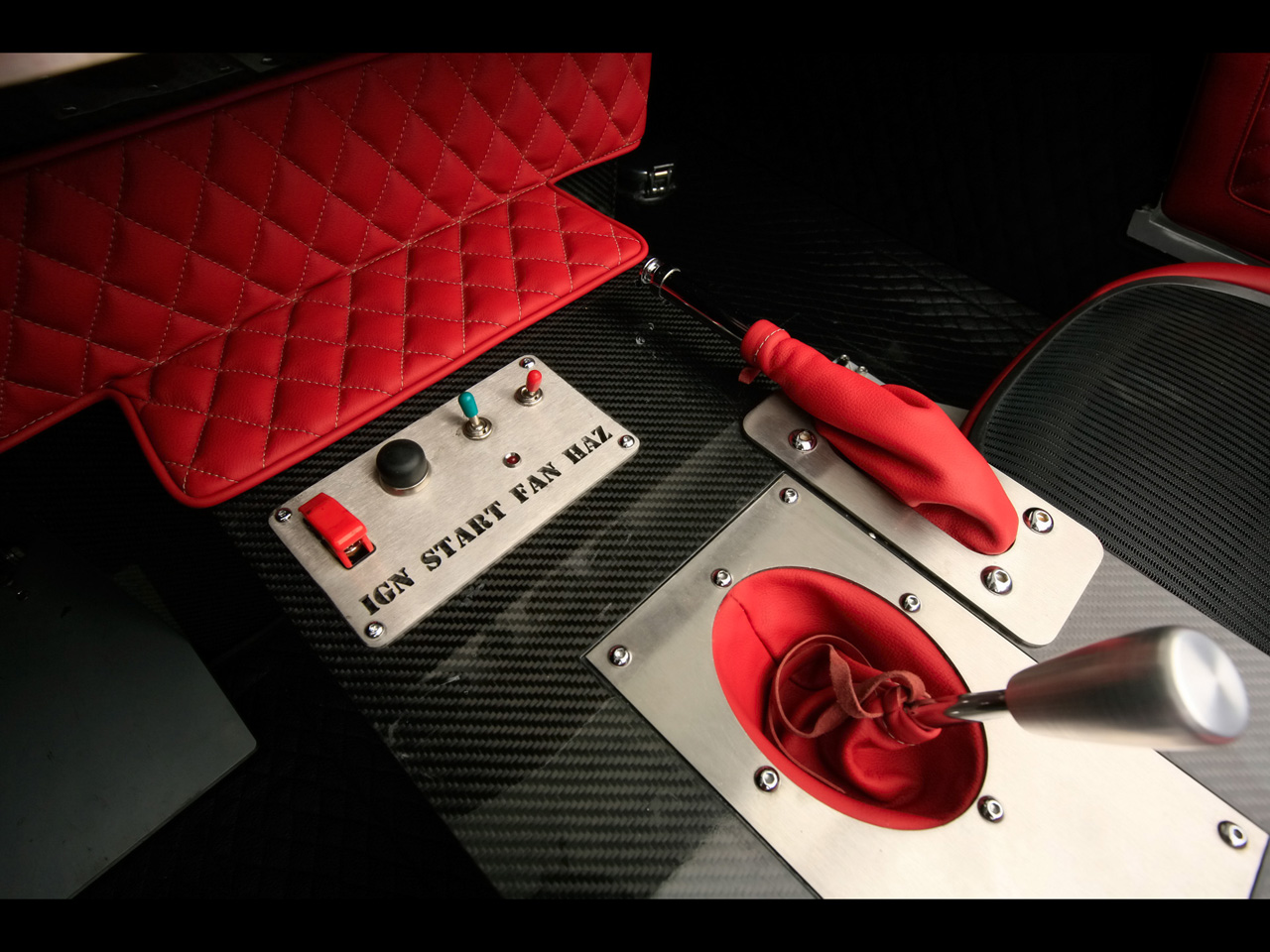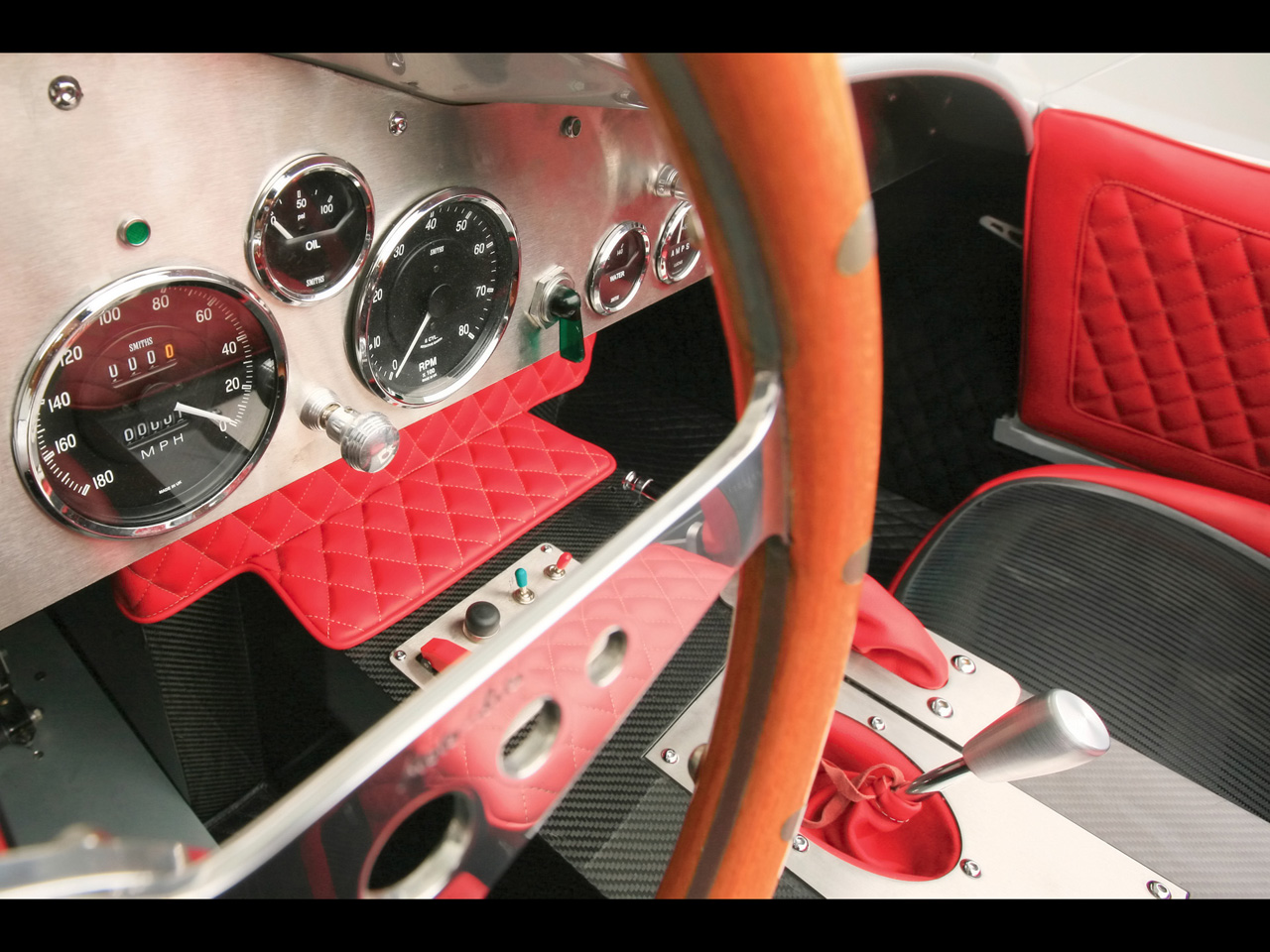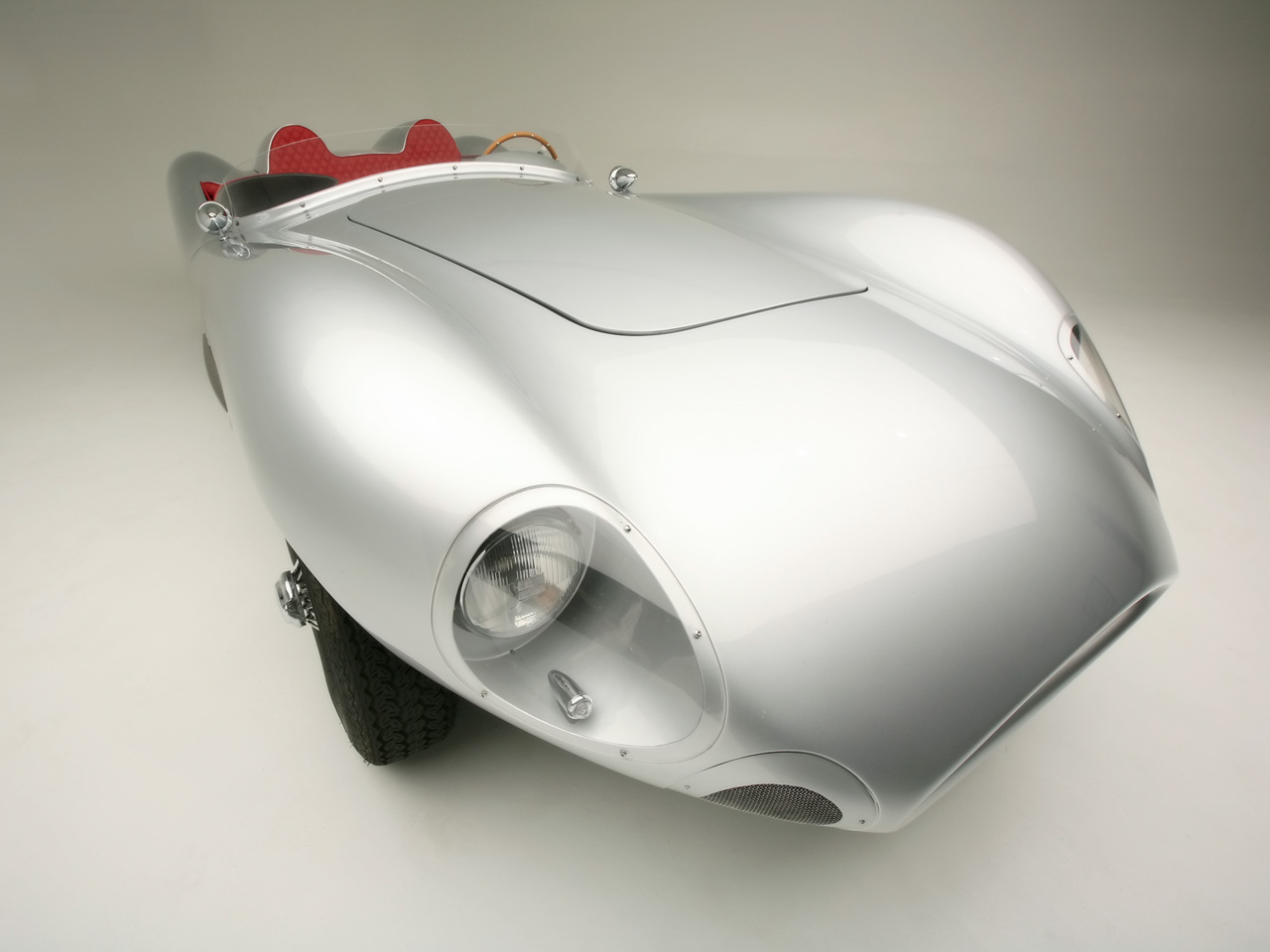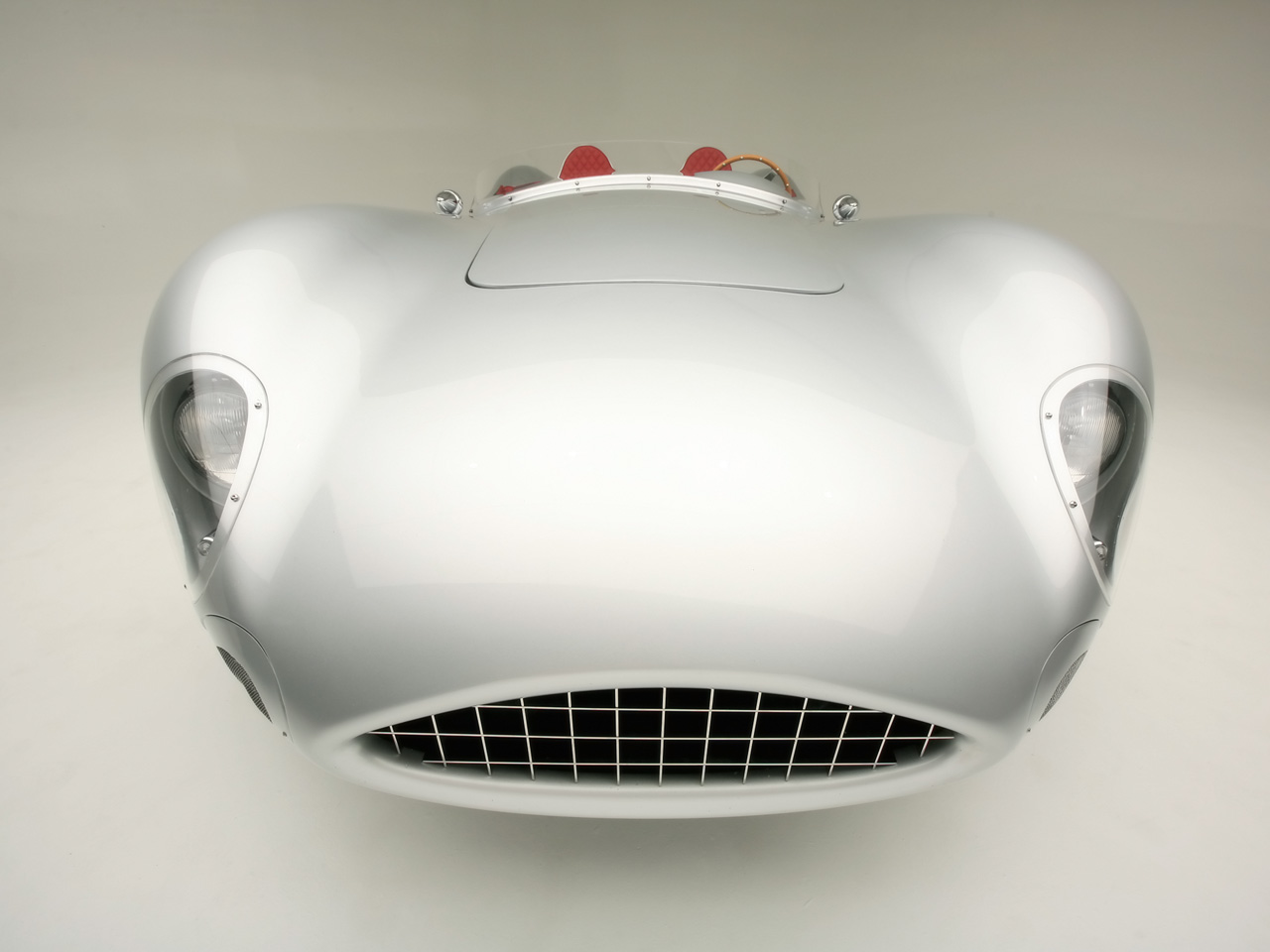2010 Rizk Auto RA
|
Price |
$180,000 |
Production |
-- | ||
|
Engine |
Jaguar i-6, V12 or LS3 V8 |
Weight |
2100 lbs | ||
|
Aspiration |
-- |
Torque |
-- | ||
|
HP |
-- |
HP/Weight |
-- | ||
|
HP/Liter |
-- |
1/4 mile |
-- | ||
|
0-62 mph |
-- |
Top Speed |
-- |
(from Rizk Auto Press
Release) At the intersection of Art and Science lies a common
soul: Creativity. The creativity of a beautiful form. The creativity
of a well executed function. The history of the Automobile spans a
century of innovation and sensuous design, yet unfortunately rarely
both attributes combined. The RA assimilates the best elements of
the most seminally beautiful racers of the golden era with the
material and manufacturing processes of current aerospace
technology.
Transcending the mundane mechanics of mere transport, the RA is
meant to transform every journey into a lifestyle. A lifestyle that
recognizes that speed and sport have form, and that in nature there
are no straight lines. The visceral experience of driving a RA; the
noise, the vibration, the intimacy of the surroundings; are an
affirmation of a life worth living. RA is a statement of elegant
choices, of lack of pretence and of an uninhibited joy for speed.
Art
Drowning in a sea of sharp lines and edgy Bangelized surfaces, the
era of sensuous curves seems to have eluded us. Whether the
inspiration is the female form, or the weathering smoothness of
rocks immemorial, the human psyche resonates with flowing lines and
cohesive shapes.
This yearning for elegance has led us to one of the most inspired
designs in the history of the Automobile. The 1957 Aston Martin DBR2
LeMans Race car epitomizes the pinnacle of beautiful mechanical
design, when cars were still being described as sexy.
The RA relies heavily on the long lost genius of master artisans,
and has assuaged the design to accommodate the demands of a 21st
century road car while retaining its inherent beauty.
Science
The chassis was the single biggest engineering challenge in the
build of RA. Our criterion was the following: Exceptional stiffness,
extremely light weight, excellent cabin space, flexibility in
adapting multiple engine options and finally precise dimensional
accuracy.
Every vehicle in the same category of RA has always used what is
commonly known as the space frame or ladder type chassis. These are
cage like frames built usually out of steel tubing and welded
together on a jig. The main advantages to this type of structure are
very low tooling costs and they can be built to good stiffness. Yet
the space frame has two significant flaws. They are heavy (if
strength and stiffness are achieved) and extremely inefficient in
packaging especially for the occupants of the vehicle. This
immediately eliminated the space frame as an option for RA.
We decided that the chassis will not be compromised. Thus an all
Carbon monocoque chassis was the only solution. There is only one
disadvantage to this design: it is prohibitively expensive. Yet we
were undaunted and the challenge thus became to engineer the tooling
and chassis to aircraft quality standards. We consulted with one of
the best men in the industry; Philip Henderson; a composites guru
whose extensive Formula 1 resume includes the Benetton team during
the tenure of Michael Schumacher (he won 2 world championships with
them) and the distillation of his expertise and experience resulted
in the RA chassis.
What we have achieved is a stiffness that is incomparable to any
mass produced production vehicle, spectacular cabin space that will
accommodate frames from 5’0” to 6’5” comfortably and a total weight
of only 220 lbs. No other custom built classically designed vehicle
in the world has this level of engineering, strength and technology
in one package.
From Formula 1 to NASA’s space exploration vehicles, the most
prevalent composite structure in use are the Carbon-Nomex body
panels. These are some of the highest performing materials available
to man. The carbon is used for the skin plys, providing one of the
best strength to weight ratios. Nomex; used as the core material; is
an aramid that is fire retardant and has exceptional shear
properties.
The purpose of using Nomex is to add thickness to the material
without adding any substantial weight. A composite structure’s
stiffness is a function of the cube of the thickness of the
material. Thus if we compare 2 composite panels, one with 1t
thickness and the second with 2t thickness, the second panel will be
approximately 7-8 times as stiff as the first. Typical automobiles
are built with a sheet metal thickness of approximately 0.04” inch
(19 gauge). On the other hand, every panel on the body of RA has a
composite thickness of 0.5” inch. Doing a very simplified
mathematical comparison, the RA would yield a body stiffness that is
more than 1500 times stiffer than common sheet metal bodies.
Furthermore the energy absorption characteristics of Nomex provide
superior crash protection compared to traditional stamped bodies.
Finally the thickness also adds to the thermal insulation properties
of the panels. In laymen terms, the body of the car is extremely
stiff and cannot be bent or dented by any human force, is a natural
insulator of heat, is extremely safe in an accident and the entire
body of the car weighs less than 100 lbs.
When NASA embarked on their Mars rover program they needed to invent
a new and far more efficient insulation solution that would provide
exceptional heat shield properties for the rovers from the harsh
environment of Mars.
This product, the first breakthrough technology incorporating
Nano-tech science is called Aerogel. It is the most advanced
insulating technology in the world. The success of Aerogel has been
so spectacular, that NASA created a company to commercialize the
product.
RA is the first passenger vehicle to use Aerogel as its primary
insulating material. The entire engine bay and underside of the
vehicle is covered in this space age hydro-phobic (water resistant)
compound. The light weight and extraordinary attributes of Aerogel
make the RA the most technically advanced vehicle in the world when
it comes to heat insulation.
Technicals
Fully independent Front and Rear Suspension with all wheel disc
brakes and adjustable coil over shocks.
Height adjustable steering column and pedal assembly.
Custom Herman Miller ™ Seats with adjustability of seat bottom
angle, height and lumbar.
All Carbon Monocoque Chassis with Aluminum Honeycomb
All Carbon Body with Nomex Honeycomb
Engine Options:
- Jaguar Straight 6 cylinder with triple SU or Weber Carburetor
- Jaguar V-12 Cylinder with triple SU or Weber Carburetor
- Fuel Injected Corvette LS3 V8 Engine
Transmission
- Manual 5 Speed
- Manual 6 Speed (Corvette Engine only)
- Automatic 6 Speed (Corvette Engine only)
Weight: 2100 lbs



